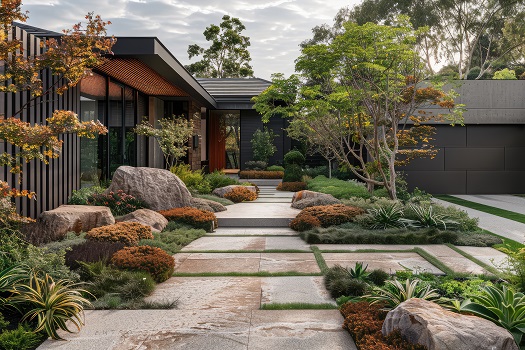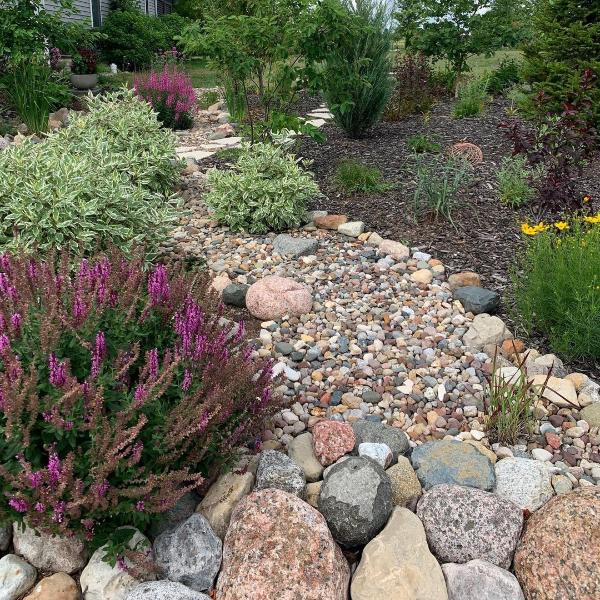Some Ideas on Hilton Head Landscapes You Should Know
Table of ContentsThe Single Strategy To Use For Hilton Head LandscapesNot known Details About Hilton Head Landscapes Little Known Questions About Hilton Head Landscapes.Indicators on Hilton Head Landscapes You Need To KnowNot known Facts About Hilton Head LandscapesThe 7-Minute Rule for Hilton Head LandscapesThe Greatest Guide To Hilton Head LandscapesEverything about Hilton Head Landscapes
Type compatibility is likewise a major component of unity in designone or 2 noticeably various types are great for contrast and emphasis, however typically all other forms ought to have some resemblances for a linked appearance. Texture describes how crude or great the surface of the plant or hardscape material feels and/or looks.
Examples of plants with rugged structure include philodendrons, agaves, bromeliads, hollies, hands, and hydrangeas. Hardscape with crude texture consists of rough-cut stone, rough-finished block, and unfinished wood with knots and a raised grain. Aged or old building material that preserves a weather-beaten surface is typically coarse in appearance. Qualities that produce fine texture include tiny foliage; thin, strappy fallen leaves (turfs) or high, thin stems; small, thick branches and little branches; long stems (vines); and little, delicate flowers.
Excitement About Hilton Head Landscapes
Most plants are average structure, in that they can not be explained as having either coarse or great structure. Medium-textured plants act as a history to link and combine the coarse- and fine-textured plants.

To make a room feel smaller, place the coarse appearances along the outer boundary and the great appearances closest to the audience. The information of the coarse structure makes the plants appear closer and makes the area really feel smaller sized. The regarded appearance of plants can additionally change with the range from the plant.
How Hilton Head Landscapes can Save You Time, Stress, and Money.
Vibrant colors raise the comparison and make the structure show up coarser, while muted colors can squash texture. Hardscape with a crude texturesuch as extremely rough rocks and vibrant, big timberstends to make all plant product appear more moderate textured. Developers often create a texture study (Number 8) on paper to assist decide the plan of plant products.
Figure 8. Appearance research study. Shade in plant material and hardscape adds rate of interest and variety to the landscape. Color is the most noticeable element in the landscape and is normally the emphasis of most home owners; nevertheless, it is additionally the most temporary element, typically lasting just a few weeks a year for individual plants.
How Hilton Head Landscapes can Save You Time, Stress, and Money.
A simple description of the shade wheel consists of the 3 primaries of red, blue, and yellow; the three secondary colors (a mix of two primaries) of environment-friendly, orange, and violet; and 6 tertiary shades (a mix of one surrounding primary and additional color), such as red-orange. Color theory describes the partnership of shades per various other and just how they need to be made use of in a composition.

Analogous (often called unified) color pattern are any type of three to 5 shades that are surrounding on the color wheel, such as red, red-orange, orange, yellow-orange, and yellow, or blue, blue-violet, and violet (bluffton landscaping). The shades belong to each other due to the fact that they usually include two main colors mixed to form a secondary and two tertiary colors, which means they share typical residential or commercial properties
Complementary shades are often discovered naturally in flowers; an usual set is yellow and violet. Shade is discovered in the flowers, vegetation, bark, and fruit of plants.
More About Hilton Head Landscapes
Eco-friendly vegetation in all its different shades is the dominant shade by quantity, however other shades catch focus a lot more easily as a result of their high comparison to the color green. Color is additionally located in buildings, rocks, pavers, wood, and furnishings. Many shades in all-natural materials, such as stone and timber, are usually muted and have a tendency to be variants of brown, tan, and light yellow.
Shades have properties that can impact emotions, spatial understanding, light quality, balance, and focus. Cool shades often tend to be calming and ought to be used in areas for leisure and serenity.
Hilton Head Landscapes Fundamentals Explained
The "temperature" of shades can also influence the perception of range. Great colors have a tendency to recede and are viewed as being farther away, making a space feel bigger. Warm shades tend to advance and are regarded as being closer, making a room really feel smaller sized. Shade can likewise be made use of to record attention and direct sights.
Bright yellow, which has the greatest strength, likewise has a high comparison with all other colors (frequently defined as a "pop" of shade) and ought to be utilized sparingly. A percentage of extreme color has as much aesthetic weight as a huge amount of a much more subdued or weaker shade.
Similar (sometimes called unified) color pattern are any 3 to 5 colors that are adjacent on the color wheel, such as red, red-orange, orange, yellow-orange, and yellow, or blue, blue-violet, and violet. The colors relate per other because they commonly include two primary colors blended to create a second and 2 tertiary colors, which indicates they share usual buildings.
Some Known Facts About Hilton Head Landscapes.
They often tend to have high comparison in between them. One of the most usual collections are violet and yellow, red and green, and blue and orange. Corresponding shades are typically discovered naturally in blossoms; an usual set is yellow and violet. Color is found in the blossoms, foliage, bark, and fruit of plants.
Green foliage in all its various tones is the leading color by quantity, yet other shades capture focus link quicker as a result of their high contrast to the shade green - Landscaping bluffton sc - https://www.cheaperseeker.com/u/h1tnhdlndscps. Color is additionally discovered in buildings, rocks, pavers, timber, and furniture. A lot of colors in natural materials, such as rock and wood, are generally low-key and have a tendency to be variants of brown, tan, and pale yellow
The 30-Second Trick For Hilton Head Landscapes
Colors have homes that can influence emotions, spatial assumption, light quality, equilibrium, and focus. Cool shades often tend to be relaxing and must be used in locations for relaxation and tranquility.
The "temperature" of colors can also impact the assumption of range. Trendy shades tend to recede and are viewed as being farther away, making an area feel larger. Warm colors tend to breakthrough and are viewed as being closer, making an area feel smaller. Shade can also be utilized to record focus and direct sights.
For example, intense yellow, which has the highest possible strength, additionally has a high contrast with all various other shades (usually called a "pop" of color) and should be made use of moderately. A small quantity of extreme color has as much aesthetic weight as a big quantity of an extra suppressed or weak color.